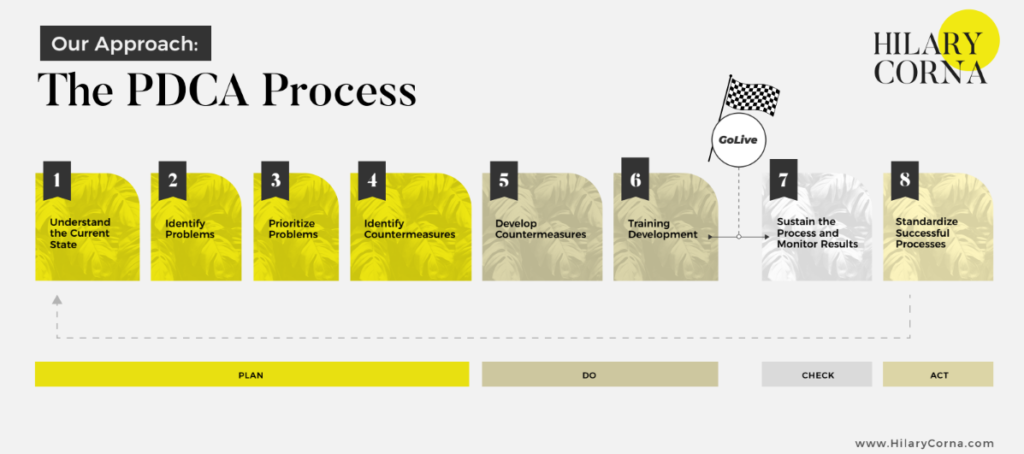Are you ready to explore a powerful methodology for process transformation in service-based businesses? Today, we’re diving into the world of the PDCA (Plan-Do-Check-Act) process and how it can revolutionize the way companies approach improvement and change. This three-part blog series will take you through the key steps of this process and how it can be applied to service-based organizations.
Introduction to the PDCA Process and Its Origin
The PDCA process, popularized by Toyota, is a systematic approach to continuous improvement. Toyota is renowned for its quality and processes. When I started my time at Toyota, the president of the company had this vision:
If these are just tools and techniques, including PDCA, from manufacturing, which is a widget going through a process, how can we take this and apply it to the sales side of our business, which is a person going through a process?
The tools and techniques that work efficiently in manufacturing can be adapted to the sales and service side of a business. Imagine taking the same mindset that ensures quality control on a production line and applying it to the realm of customer experience. This process isn’t about customer experience design per se, but it does overlap and provide a structured approach to achieving the desired outcomes.
Understanding the PDCA Process Overview
The PDCA process involves four main stages: Plan, Do, Check, and Act. Let’s explore the first two stages in this part:

Plan Stage: (Steps 1 and 2) Understanding the Current State and Identifying Problems
The journey begins by understanding the current state of the process. Before you can solve problems, you need a clear picture of how things currently work. This involves creating a “goods and information flow”—a visual representation of how goods and information move through the process. This step eliminates biases and sets the foundation for effective problem-solving.
Next comes problem identification. Rather than jumping straight into solving issues, the focus is on pinpointing where problems occur within the process. These problems are named based on the touchpoints where they arise. Prioritization then follows, selecting the top problems to tackle, often capped at 25 to maintain focus.
Plan Stage: (Steps 3 and 4) Prioritizing Problems and Identifying Countermeasures
Prioritizing problems requires a combination of qualitative and quantitative methods to identify the issues that offer the highest return on investment in the shortest time frame. This approach ensures the right energy is directed toward solving the most impactful problems.
The last step of the PLAN stage is identifying countermeasures. It is a critical step where solutions are crafted for the identified problems. We specify what changes we are going to make, the person in charge of the change, and the tools needed to solve the problems. Countermeasures can include various changes, such as developing standardized templates, checklists, or scripts. Each problem may require multiple countermeasures to address it effectively.
Plan to Succeed
Steps one through four of the PDCA process are about planning. As a general rule of thumb at Toyota, we would always say that we spend 60% of our time planning to achieve better results on the backend.
We aim to eliminate the wasteful effort that comes from trial and error. This shift allows us to invest more time on the front end, ultimately saving time on the back end and increasing our effectiveness in solving the problems at hand.
Stay tuned for the second part of this series, where we’ll delve into the Do phase, which involves developing countermeasures and training development.
In your service,
Hilary Corna














